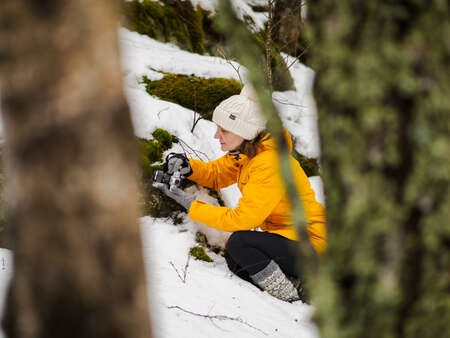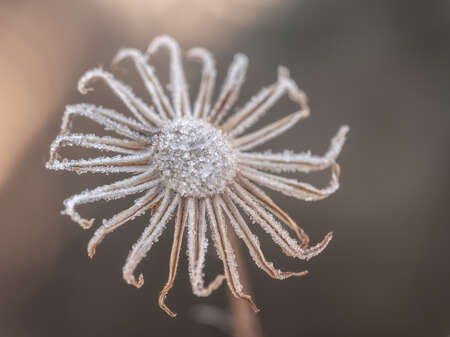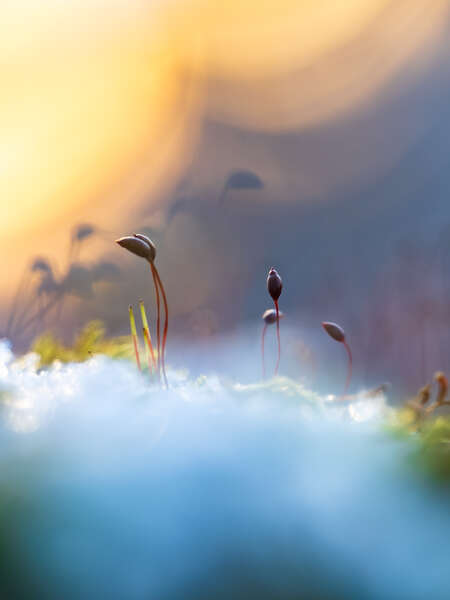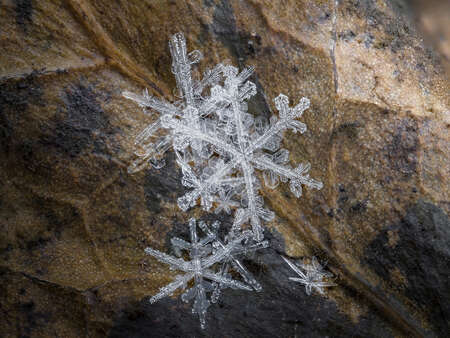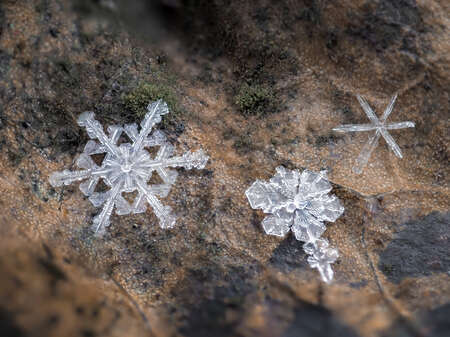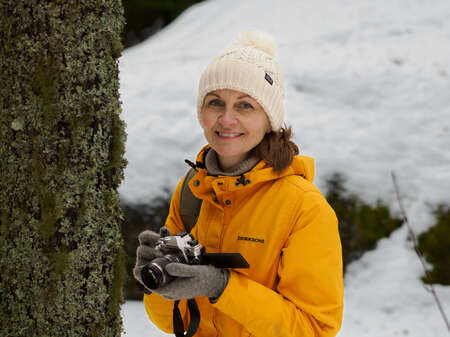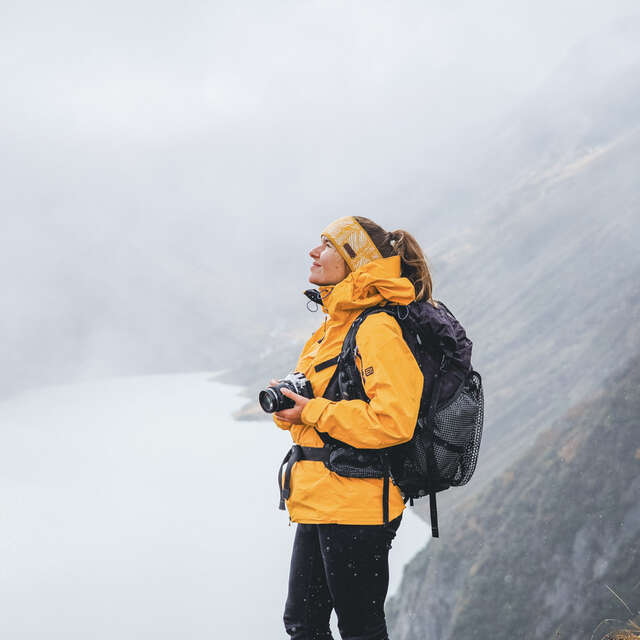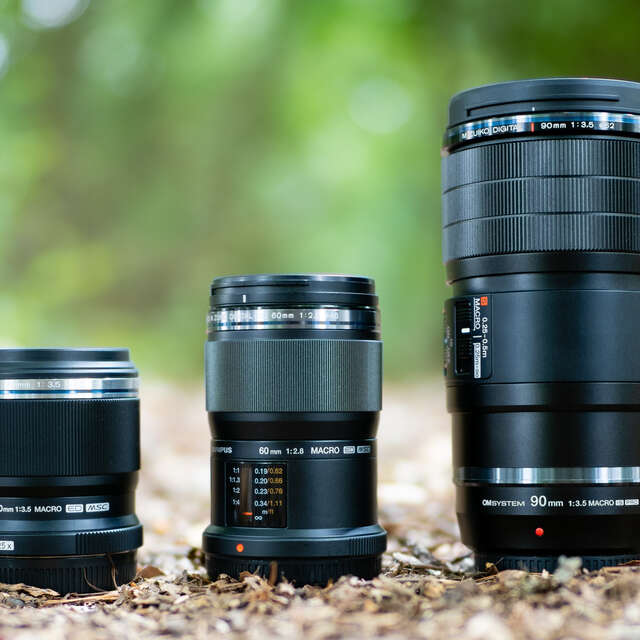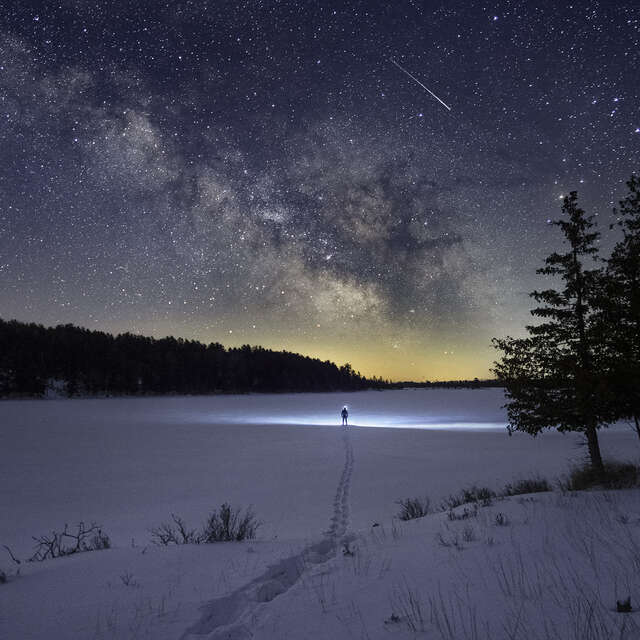When it comes to macro photography, our thoughts easily drift to the warm season and insects, plants, and fungi. After the abundance of summer and fall, it can be challenging to adapt to a new season, and of course, photography is more challenging in winter due to the weather conditions. However, I've decided to take it as a challenge and an opportunity to develop technically and gain a new perspective on photography and nature. I don't want to give up my beloved hobby just because it's winter! With weather-sealed equipment at my disposal, they don't impose limitations on photography.
Prepare
Your equipment is weather-sealed and can withstand the cold, so should you.
Perhaps the most challenging aspect of winter macro photography has been the cold and weather conditions. Like in nature photography in general, the weather is an unpredictable element beyond our control. We can only adapt. With the weather-sealed OM-5 camera and lenses, there's no need to worry about the equipment; I only need to take care of myself and stay warm! Especially in macro photography, I'm often stationary, crouching or kneeling on the ground. This requires ensuring that moisture and cold don't creep through clothing. Keeping your head, hands, and feet warm and dry is essential.
For me, my hands are most sensitive to the cold. The camera is very cold to handle, and if you use a tripod, it becomes just as cold as the environment. I often slip hand warmers inside my gloves. It's also a good idea to have an extra dry pair in case they get wet, for example, from snow. Handling the camera with gloves can be clumsy. You can conveniently program camera functions to different buttons to match your shooting style. So, adjust the camera settings as much as possible at home. Don't forget to carry spare batteries and keep them in your pocket close to your body's warmth.
Different Stages of Winter
Utilize late autumn fungi and plants - and be surprised by what you can find in late winter
The arrival of winter also surprises nature, and you can find fantastic macro subjects that get covered in the first snow. Late autumn fungi and vegetation provide a beautiful contrast to winter photos. But did you know that as the winter snow melts early in spring, you can spot the year's first fungi? In this picture, a mushroom growing on a tree trunk appears radiant in the grayness of March. I achieved a broader view by using a 30mm F3.5 Macro lens and more depth of field with the OM-5 camera's Focus Stacking function.
Another way to take advantage of early winter opportunities is to capture frost-covered plant remnants, which the beautiful ice crystals bring to life - the birth of new beauty! The details of individual ice crystals are revealed with the 80 megapixel HighRes Shot function. Frost is an enchanting natural wonder that appears on cold, clear nights. Delicate ice crystals form on surfaces such as grass, leaves, and branches when moisture in the air freezes directly without a liquid phase. These intricate patterns of ice crystals create a beautiful, frosty appearance.
Is Winter Just White?
How to add color and warmth to winter macro photos
During winter, the landscape is generally quite colorless. But the deeper you delve into the world of macro, the more colorful the scenery can become. Moss remains as green as in summer, and lichens can have shades of bright orange, for example. You can also creatively use various LED lights, or soft sunset hues in the background, and why not the warm light from a lantern, to add a cozy atmosphere. In these photos, the warm tones of the setting sun give a glow to the background. But are you wondering how those "shadows" on the moss clusters were created?
They are actually the clusters in the foreground that have remained in the out-of-focus area in front of the focal point, and the long focal length of the 90mm F3.5 Macro IS PRO lens makes them look like shadows. Try it yourself Mosses are hardy plants that have developed ways to adapt to cold conditions. They can continue photosynthesis at lower temperatures compared to many other plants, allowing them to maintain their green color.
Those Snowflakes
How to capture snowflakes?
Did you know that snowflakes come in plate-like, star-shaped, and various other forms, and they almost always have six corners or branches, and no two snowflakes are identical? Snowflakes are also extremely small, just a few millimeters in diameter, so capturing them requires extreme magnification. The M.Zuiko 90mm F3.5 Macro IS PRO is the best choice for photographing snowflakes, as it offers a 2x magnification and up to 4x magnification with the MC-20 teleconverter.
With these magnifications, you need a powerful stabilizer, as even the slightest movement is significant at these levels. Therefore, the stabilizer of the 90mm F3.5 Macro IS PRO lens, along with the OM-5 camera's Sync-IS body stabilizer, is essential for handheld macro photography. If you want even more stability, be prepared for these high magnifications with a small tripod that allows you to get close to the subject, even at ground level
When I walk in nature, I also want to learn more about the things and phenomena I photograph and observe. Winter is a unique time for a photographer, as it offers the opportunity to observe nature with a fresh perspective. Even ordinary things appear wondrous in the world of macro, even in winter, and that's very inspiring. Hopefully, you'll embark on your own winter adventure with these tips! See you outdoors!

